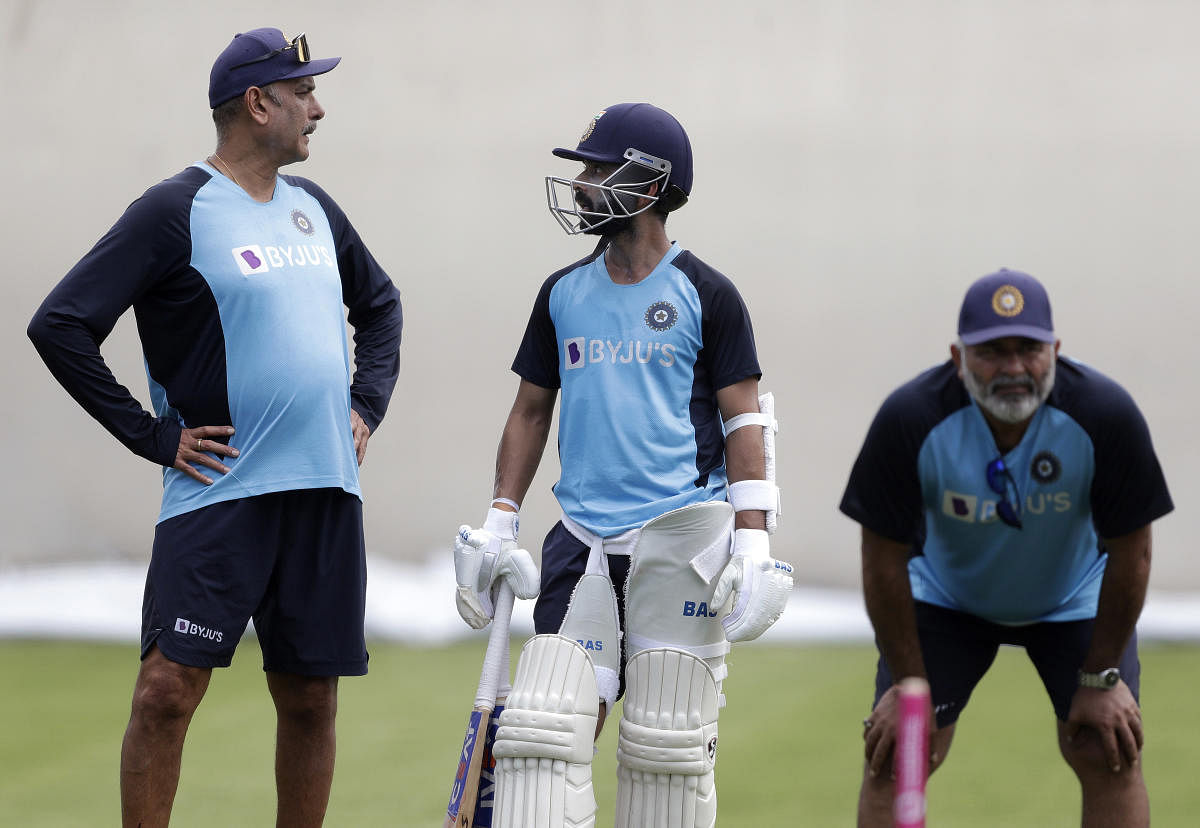
“Bowl to a plan,” is a commonly used phrase in cricket. The Indians did that exceptionally well during the course of the four-match Test series against Australia that earned them plenty of plaudits from the cricketing fraternity across the world.
Having figured out that the Australians loved scoring on the off-side, the Indian think-tank came up with a smart plan that caught Tim Paine’s men unaware. The Indians consistently kept bowling in the middle and leg-stump channel and packed the on-side with fielders to cut off the run flow. They basically threw the conventional ploy of bowling in and around the off-stump corridor out of the window.
With bowlers, even newbies like Mohammed Siraj, showing remarkable discipline in maintaining that line and length, the Indians were able to apply the chokehold on the unsuspecting Australians, who simply struggled to get out of it for the majority of the series. Run scoring became doubly difficult for the Australians and the sustained pressure yielded wickets for the Indians.
India’s bowling coach Bharat Arun, speaking to the media on Friday, said the plan was conceived by head coach Ravi Shastri in July and the results were months of planning and hard work. “Ravi Shastri called me sometime in July. When we were discussing the Australia tour, he said that we need to take the off-side out of the Australians. So we had our own analysis and felt that most of the runs that Steven Smith and Marnus Labuschagne had scored was off the cut, pull and on the off-side. We also took a cue out of the New Zealand attack when they bowled to Steven Smith, where they had attacked his body and he had felt very uncomfortable at that point in time.
“So Ravi called and said, ‘I want you to make a plan where we eliminate the off side for the Australians.’ Then we sat and planned the whole thing. We said we’re going to attack straighter lines and have on-side fields for batsmen to be consistently clearing the on-side fields. The thought process started in July and when we had discussion with Virat (Kohli), he bought into the theory. We employed it in Adelaide and Ajinkya (Rahane) was magnificent in Melbourne onwards and the bowlers responded beautifully.”
A standout feature about India’s epochal 2-1 series is how the bench strength responded to the challenges. India kept losing key personnel game after game but every player who came in responded like a seasoned top-class cricketer. Mohammed Siraj, leading the Indian pace attack in the final Test at the Gabba, emerged as the leading wicket-taker from the country with 13 scalps, including a 5/73 in the final Test. T Natarajan and Washington Sundar excelled on their debuts while Shardul Thakur and Navdeep Saini gave a good account of their talent and hunger.
Arun hailed all of them as champions. “Siraj has the knack of taking wickets, has over 150 first-class wickets. He’s been outstanding in India A and Ranji Trophy. Shardul has time and again picked more than 40 wickets for Mumbai. Saini had the pace. Natarajan’s length, brings the left-handed angle, it’s new angle for us. All that we were talking about was the need to be consistent. They all have ability.
“The only thing is margin for error in Tests is very small so they needed to eliminate that (inconsistency). Every time they were in the nets, they had to decide lines they’re going to bowl and had to discuss with me. My job was to give them right feedback and assess how they’ve done that particular day. Every net session, if you’re clear what you want to execute, it becomes easier in match situations. Of course the pressure of a Test is different, but the players have reacted under pressure, looked upon it as a challenge as an opportunity to excel, that’s what makes champions.”
Bharat also said the decision by Shastri to hold back the net bowlers like Nataraj after the limited-overs series turned out to be a masterstroke.
“Australia is one of the most challenging tours. Especially during these Covid times, it was a great move by Ravi Shastri to hold back all the bowlers who had come as net bowlers. After the one-day series, most of them were supposed to go back. But then we thought if something happens to a player, then it would not be possible for anyone to come because of the restrictions. So we said, we’ll manage with everyone here. Because they were with us for a long period of time, it was possible for them to understand what it demands to be successful in Australia and work on those very lines. Them being with us helped a great deal.”